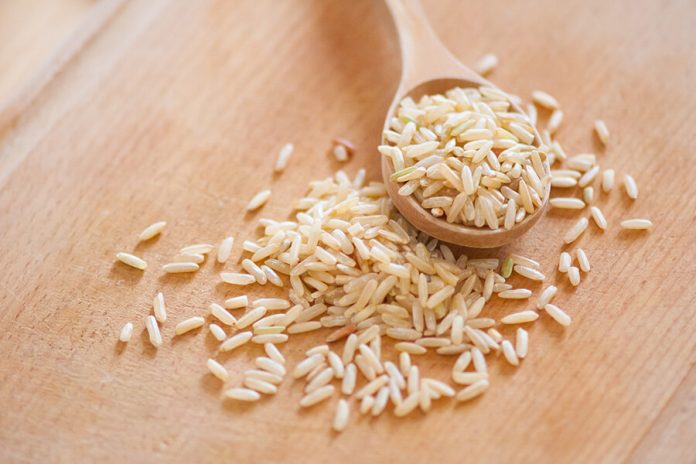This article is written by Aarushi Relan, from Amity Law School, Noida.
Table of Contents
Introduction
Dr. Vandana Shiva, an Indian environmental activist once quoted that, “Bio-piracy (is) biological theft; illegal collection of indigenous plants by corporations who patent them or their own use and benefit”.[1] Shiva has challenged the bio-piracy of Neem, Basmati and wheat by developed countries. The importance of analyzing the issue of Basmati Rice is since India has a bundle of traditional knowledge and rich heritage which if patented by other nations can put restrictions on use of such resources by the indigenous communities. India is a signatory country which complies with the provisions stated in the Trade related aspects of Intellectual Property Rights (TRIPs) for intellectual property, wherein, most countries have been committed to provide minimum standards of protection to intellectual property. Intellectual properties like plant variety, patents, geographical indications etc. are served extremely crucial for growth of agriculture in a developing country like India. The geographical Indications can be elucidated as particular goods originating from a country, region or a locality due to several special circumstances, quality and reputation of the product.[2] They are gaining a rapid popularity in the field of trade and commerce and recognize the true heritage of a country in terms of specified goods. This is due to the special quality of such products being rendered because of their goodwill.
Facts of the incident
In late 1997, the United States Patent and Trademark Office granted a patent to Ricetec Inc., the United States based multinational company headquartered in Alvin, Texas for a novel ‘grain’ also known as ‘basmati’. The company claimed the protection of new varieties of ‘basmati’ crops with better qualities than the original crop. It has been using several versions of the crop by selling it with the name ‘Jasmati’ or ‘Kasmati’ in the international rice market. Moreover, it was also professed to have developed a novel strain of the aromatic rice by inter-breeding of basmati rice with another crop known as American basmati or ‘Texmati’. The patent was granted to the company for basmati rice grains and variety by USPTO.[3] Later, the patent was opposed by the Indian NGOs like Research Foundation for Science, Centre for Food Safety and ultimately, Centre for Scientific and Industrial Research too, objected to it. The Indian sub-continent protected its traditional crop basmati while Thailand contested for the safeguarding of its claim for jasmine rice. In 2000, after examining evidence, the Indian Government challenged the patent claims by the company.
Issues raised
Several issues were raised at the occurrence of this controversy, which mainly were concentrated towards the emerging patents, bio-piracy and geographical indication laws. The major issues raised included:
- Whether the name ‘basmati’ is a ‘generic’ term or specifically originates from the aromatic rice grown in India and various South-Asian countries?
- Whether the grain developed by Ricetec Inc. is a novel variety and strain?
- Is Ricetec Inc. guilty of bio-piracy and violation of traditional knowledge belonging to indigenous communities of Southern-Asian countries?
- Whether the patent granted to Ricetec must be revoked due to protests by various NGOs and Indigenous Communities?
- Whether USPTO’s decision to grant patent to Basmati Rice violates TRIPs Agreement?
Origin of ‘basmati’ crop
Rice is considered as a staple food for South-Asian Countries and has been a part of the culture since time immemorial. For centuries, the farmers in developing countries have been working hard to nurture and develop various varieties of crops to suit the taste or needs of people consuming it.[4] It is known world-wide that the long-grain aromatic rice known as ‘basmati’ has been produced widely in the Sub-himalayan region. Basmati rice is one of the best-known varieties of rice originally cultivated in India, Pakistan and certain regions of South Asia.[5]
India is a diverse country with traditional knowledge ranging from Yoga to Ayurveda. This image demonstrates the basmati rice patent acquired by India in early 2000s. Source: Spicy IP
Case analysis
Ricetec originally got a patent grant for growing the rice crop, developing such crops of identical characteristics and identifying rice on Starch Index test basis. The company contented that its patent covered a novel form of basmati which was an improved form over its previous varieties. With reference to the usage of geographical indication named ‘Basmati’, it was argued that the term is not generic in nature to Indian sub-continent and has adopted its generic way through usage in terminology like American Basmati, Thai Basmati etc. It further stated that ‘Basmati’ does not infer a geographical area and falls within the ambit of ‘public domain’.[6]
Nonetheless, India contented that more than 75 percent of the United States rice imports are from countries like Thailand, Pakistan and India that cannot be grown in the country. The legal theory so supported was that the patent was not novel and obvious in nature. Henceforth, the validity of the patent stands null or void. After a battle of three years, India constructed data and evidence to challenge the patent validity. Whereas, the USPTO issued the patent for three strains of hybrid basmati out of around 20 claims. The remaining three strains of basmati were given protection due to a noticeable difference than the original strain of the crop.
With regard to the usage of geographical indication and trademark ‘Basmati’ used by the company, USPTO stated that since it was not a region, a trademark and geographical indication in India unlike ‘Champagne, Porto, Burgundy or Sherry’, it can be utilized by the company. Since, the crop was grown all over South-Asia than India, it was not a geographical indicator. After subsequent protests made by India and Pakistan, the name ‘basmati’ was ultimately disallowed to the patent-holder by USPTO.
Critical analysis and emergence of new geographical indication laws in India
Dr. Shiva realized that patenting of basmati rice is not only perceived as an infringement of intellectual property but a cultural theft which threatens the rights of developing countries, their traditional knowledge and practice of such knowledge by local folklore and farming communities. She states that the patent shall fool the consumers to believe that there is no difference between the traditional crop ‘Basmati’ and the spurious developed one. The theft so involved in Basmati’s case is threefold: theft of heritage and biodiversity of Indian farmers; Indian traders and exporters and finally, a deceiving of its consumers.[7]
Ultimately, the importance for emergence of a statute to protect the geographical indicators pertaining to Indian heritage and sub-continent was realized.[8] Subsequently, in 1999, India enacted a legislation called Geographical Indication of Goods (Registration and Protection) Act, 1999. It is administered as the first specific law to register and protect the geographical indications. The crop basmati has been registered as a geographical indication under the Act for states including Haryana, Uttar Pradesh, Punjab, Jammu & Kashmir, Uttarakhand, Delhi and Himachal Pradesh. Prior to 1999, there was no specific legislation to regulate and protect the geographical indications. It was, however, in 1999 that India adopted the act after complying with Article 22 of the TRIPs Agreement. The Article stated with regard to the ‘protection of geographical indicators’ with the help of 3 essential clauses. Article 22 clause (1) stated the definition of the term and clause (2) explained how the member states shall provide the legal means for interested parties to prevent any sale of misleading products to consumers and unfair competition in the market. Clause (3) suggested that member states shall implement a legislation for registration or invalidation of a trademark which might consist of geographical indications.
The Act protected the interest of producers, local communities, manufacturers and consumers from being fraudulently sold such goods and services to attain economic benefits. Subsequently, Indian Judiciary explained the term more vividly in landmark judgment Imperial Tobacco Co. v. Registrar, Trademarks[9] wherein it was portrayed that indicators are manufactured, agricultural or natural goods originating from a particular region.
Conclusion
The companies like Ricetec are violating our traditional knowledge by committing the crime of bio-piracy since India is a hot-spot of diverse flora and fauna. Other than basmati crops, indigenous crops like Karela, Jamun, Neem leaves, Imli, Adrak, Ashwagandha etc. have also faced similar patent claims by developed nations. To restrict the further conduct of bio-piracy by other developed nations, India prepared a database called ‘Traditional Knowledge Digital Library’. The idea behind TKDL is to help patent offices across the globe reject patent applications based on Indian Traditional Knowledge. This utter spread of bio-piracy not only hurts the sentiments of local communities, but results in economic losses. The concept of Geographical Indications in India is new and needs to be academically addressed for legal awareness so as to ensure no such violation takes place in future. As Serj Tanikan rightly puts up the thought and said, “Awareness in our society has flipped all the types of injustice on its head”.
References
[1] Vandana Shiva, No Patents on Seeds, Why and How to fight the Patent and Seed Act, 2005.
[2] S. Vasishta and A. R. Lall, Geographical Indications of Goods (Registration and Protection) Act, 1999, (Delhi, 2001).
[3] India – US Basmati Rice dispute, Patent No. US 5663484 A.
[4] Utsav Mukherjee, A study of Basmati Case (India-US Basmati Rice Dispute): The geographical Indication Perspective, SSRN Electronic Journal (2018-19).
[5] Amira Nature Foods Ltd., The Origin and History of Basmati Rice, https://medium.com/@amiranaturef/the-origin-and-history-of-basmati-rice-8c04f6bd7759 (last visited on 20 May 2020).
[6] Jayashree Watal, Intellectual Property Rights in the WHO and Developing Countries, The Hague (2001) 272-73.
[7] Id at 2.
[8] Shayam Krishna Balganesh, System of Protection for the Geographical Indicators of Origin: A Review of the Indian Regulatory Framework, JOURNAL OF WORLD INTELLECTUAL PROPERTY REVIEW, Vol. 6(1) (2003) 191.
[9] AIR 1977 Cal 413.
LawSikho has created a telegram group for exchanging legal knowledge, referrals and various opportunities. You can click on this link and join:
 Serato DJ Crack 2025Serato DJ PRO Crack
Serato DJ Crack 2025Serato DJ PRO Crack











 Allow notifications
Allow notifications



